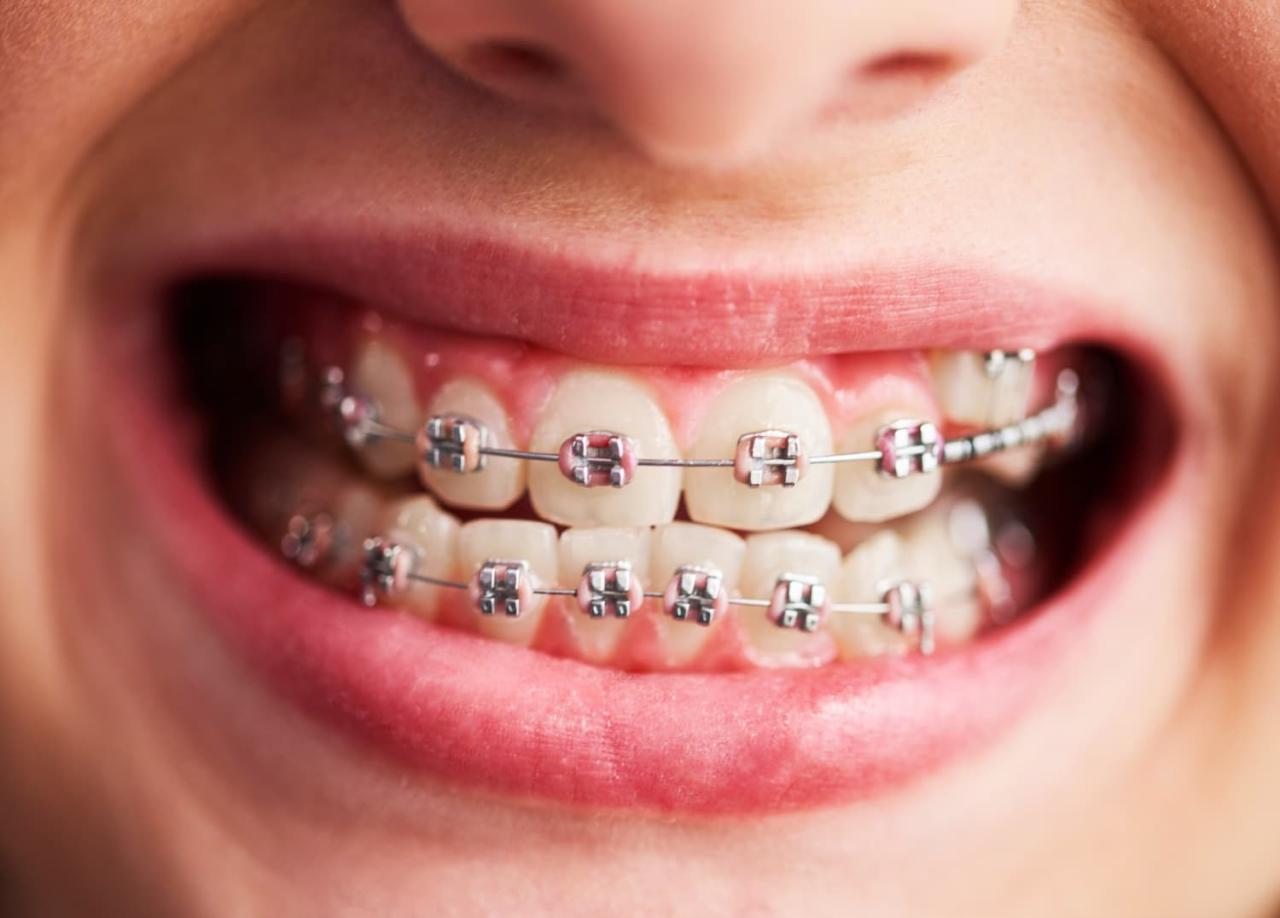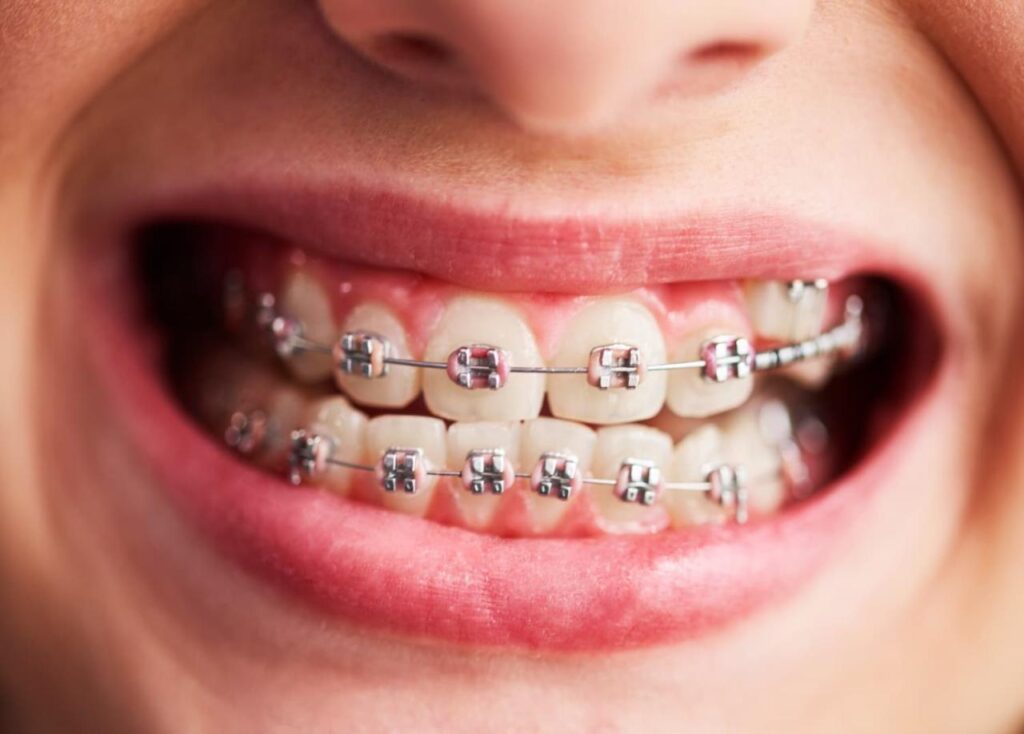Types of Orthodontic Treatment

Orthodontic treatment aims to correct misaligned teeth and jaws, improving both aesthetics and oral health. There are various types of orthodontic treatments available, each with its own advantages and disadvantages.
Traditional braces, consisting of metal brackets and wires, are the most common type of orthodontic treatment. They are highly effective in correcting a wide range of orthodontic problems, including overcrowding, spacing, overbites, underbites, and crossbites. However, they can be noticeable and may cause discomfort during the initial adjustment period.
Clear aligners, also known as invisible braces, are a newer type of orthodontic treatment that has become increasingly popular. They are made of transparent plastic and are virtually invisible when worn. Clear aligners are removable, allowing for easier eating and brushing. However, they may not be suitable for all orthodontic problems and may require a longer treatment time compared to traditional braces.
Other orthodontic options include lingual braces, which are placed on the inside of the teeth, and ceramic braces, which are made of tooth-colored material. These options offer a more discreet alternative to traditional braces while providing similar results.
The choice of orthodontic treatment depends on the individual’s specific needs and preferences. It is important to consult with an orthodontist to determine the most appropriate treatment option.
Coverage by Insurance
Insurance policies may cover orthodontic treatment, depending on the type of insurance and the specific plan. Understanding the coverage and limitations is crucial before proceeding with treatment.
Insurance Types
Dental insurance plans typically cover a portion of orthodontic expenses. Dental insurance is usually offered through employers or purchased individually.
Medical insurance plans may also cover orthodontic treatment in certain circumstances, such as when the treatment is deemed medically necessary to correct a congenital condition or a functional issue.
Limitations and Exclusions
Insurance policies often have limitations and exclusions related to orthodontic treatment. These may include:
- Age restrictions: Coverage may be limited to children and adolescents.
- Treatment type: Some policies may only cover certain types of orthodontic treatment, such as braces or Invisalign.
- Pre-existing conditions: Orthodontic treatment may not be covered if the condition existed before the insurance policy was obtained.
- Waiting periods: There may be a waiting period before orthodontic treatment is covered.
Common Insurance Plans
Examples of insurance plans that may cover orthodontic treatment include:
- Delta Dental: Offers a range of dental plans that include orthodontic coverage.
- Cigna: Provides dental and medical plans that may cover orthodontic treatment.
- Blue Cross Blue Shield: Offers both dental and medical plans that may include orthodontic coverage.
Factors Affecting Coverage
Insurance coverage for orthodontic treatment is not guaranteed and depends on various factors. These include age, medical necessity, and pre-existing conditions.
Age plays a significant role in determining coverage. Many insurance policies only cover orthodontic treatment for children and adolescents, as their teeth and jaws are still developing. Coverage for adults may be limited or excluded altogether.
Medical Necessity
Medical necessity is another crucial factor. Orthodontic treatment must be deemed medically necessary for it to be covered by insurance. This means that the treatment must address a specific dental or jaw condition, such as a malocclusion (misalignment of teeth), or a functional issue, such as difficulty chewing or speaking.
Pre-existing Conditions
Pre-existing dental conditions can also affect coverage. If an orthodontic condition is a result of a pre-existing condition, such as a genetic disorder or an injury, insurance may not cover the treatment.
For example, if a child has a cleft palate, the orthodontic treatment required to correct the misalignment of their teeth may not be covered if the cleft palate is considered a pre-existing condition.
Maximizing Coverage
To maximize insurance coverage for orthodontic treatment, it’s crucial to understand your policy and negotiate with providers. Understanding the specific terms and exclusions of your insurance plan will help you anticipate coverage limitations and potential out-of-pocket expenses.
Negotiating with Providers
Negotiating with orthodontic providers can be an effective way to reduce treatment costs. Consider the following strategies:
– Compare quotes: Obtain quotes from multiple providers to compare costs and services offered.
– Inquire about payment plans: Ask providers about payment plans or discounts for upfront payments.
– Negotiate fees: Discuss the possibility of reducing the overall treatment fee or specific charges.
Alternative Options
If insurance coverage is not available, exploring alternative options for orthodontic treatment is crucial. These options may include:
- Payment Plans: Orthodontists often offer flexible payment plans that allow patients to spread the cost of treatment over several months or years.
- Flexible Spending Accounts (FSAs): These accounts allow employees to set aside pre-tax dollars for healthcare expenses, including orthodontic treatment.
- Government Assistance Programs: Certain government programs, such as Medicaid, may provide financial assistance for orthodontic treatment to low-income families.
Organizations Offering Financial Assistance
Several organizations provide financial assistance for orthodontic treatment to those in need:
- Smile for a Lifetime Foundation: This organization provides grants to children and young adults from low-income families for orthodontic treatment.
- Orthodontic Smiles Foundation: This foundation offers financial assistance to families who cannot afford orthodontic treatment.
- American Association of Orthodontists Foundation: This foundation provides grants and scholarships to orthodontic residents and students.







